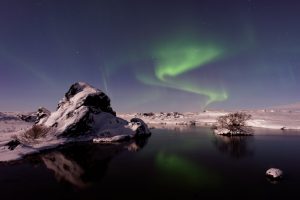203 786 2345 office@eturia.com
“No matter where you’re from, your dreams are valid” – Lupita Nyongo
And this is the truth. No matter where you are from, when visiting Kenya, your dreams come true. Whether you’re looking for the thrills of a safari or the relaxation of a beach, or for contrasting cities, as well as for traditional villages, Kenya is the place to be. Here, you can admire snowy peaks of glacier mountains, the famous Rift Valley with volcanoes and steep rifts, the biggest lake of Africa – lake Victoria, dessert areas and exotic islands with coral reefs that will take your breath away. And not because you’re under water, but as a consequence of their mesmerizing beauty.
Tipping:
Restaurants & Cafes: Tipping is generally 20-30 shillings per drink or the equivalent of 10% of the total amount of the bill.
Hotel staff: For luggage, an amount between 50-100 shilling / person / baggage is generally recommended.
Kenya is a world wonder. Mombasa beaches, where you can meet and greet the coral reefs, Amboseli National Park, where you can admire the giant African elephant community and the local maasai villages are some of the reasons you should visit this country. And if you are not convinced (yet), here are some additional reasons:
Kenya is a destination that can be approached throughout the year although the better opportunity is out of the rainy season. Weather is tropical wet on the east coast and continental temperate inland and in the high northwest areas. There are two rainy seasons in Kenya: the longest, between March and May, the shortest, from November to mid-December. Even during the rains, the temperatures are kept high, at a pleasant level, especially in the morning and in the greenhouse. The coldest months are July and August, and the warmest are February and March. Average annual temperatures vary in major cities from 25 ° C in Nairobi, 30 ° C in Mombasa, 26 ° C in Kisumu at 35 ° C in Lodwar.
In plateau areas, the weather is generally warm and dry, with temperatures between 25 ° – 30 ° C during the day, throughout the year. During the night, temperatures drop even down to 5 ° C, especially in August-September, when it is recommended to have thicker clothes for the morning and evening. In the coastal area, the climate is tropical, humid and hot, with daily temperatures ranging from 27 ° C to 31 ° C, while in the north and north – east it is very dry.

Escalate this Kenyan giant, the second tallest mountain from Africa. You probably won’t reach the top, but the thrill from trying this is incomparable! The main peaks from Mount Kenya Natural Park are Batian – 5.199 m, Nelion – 5.188 m and Point Lenana – 4.985 m. You must visit this spot if you want to see the black African buffalo and a rare species of colobus monkey.


The Kenyan capital Nairobi also is Kenya’s biggest city. Its name comes from the Maasai dialect. “Enkare Nyirobi” means “the place with cool waters”. Naiorbi is unofficially called by its inhabitans “the green city under the Sun”. The National Museum, Karen Blixen Museum, Uhuru Gardens, Jomo Kenyatta Mausoleum, Rahimtulla Modern Art Museum, the Giraffe Protection Area, and the Railways Museum are among the greates attractions.


It impresses bird watching amateurs with the multitude of bird species, among which the thousands of pink flamingos living around the lake, thanks to the nutrients in its waters. The best place to admire this wonderful nature spectacle is the Baboon Cliff, which opens a wide view of the lake and surroundings. In 1961 the area was declared a National Park to protect African fauna species, including white rhino, black rhinoceros and Rothschild giraffes.


The name comes both from the ethnic Maasai people and from Mara – river which crosses the area. The park is famous for the large cattle population, but also for the annual migration from Serengeti (zebras, gazelles and wildebeests). The phenomenon takes place between July and October and is so impressive with the large number of migrating animals that has been called “the Great Migration”. It is said that the Maasai Mara Reservation is the area with the highest concentration of wildlife all over the world.


It is located in the hilly area of northern Kenya and is crossed by Raul Ewaso Ngiro. The presence of shady trees makes wild life flourish. Giraffes, gazelles, zebras (including the endangered species of Grevy), but also lions, leopards, or chimps are easy to see because of the typical savannah vegetation.